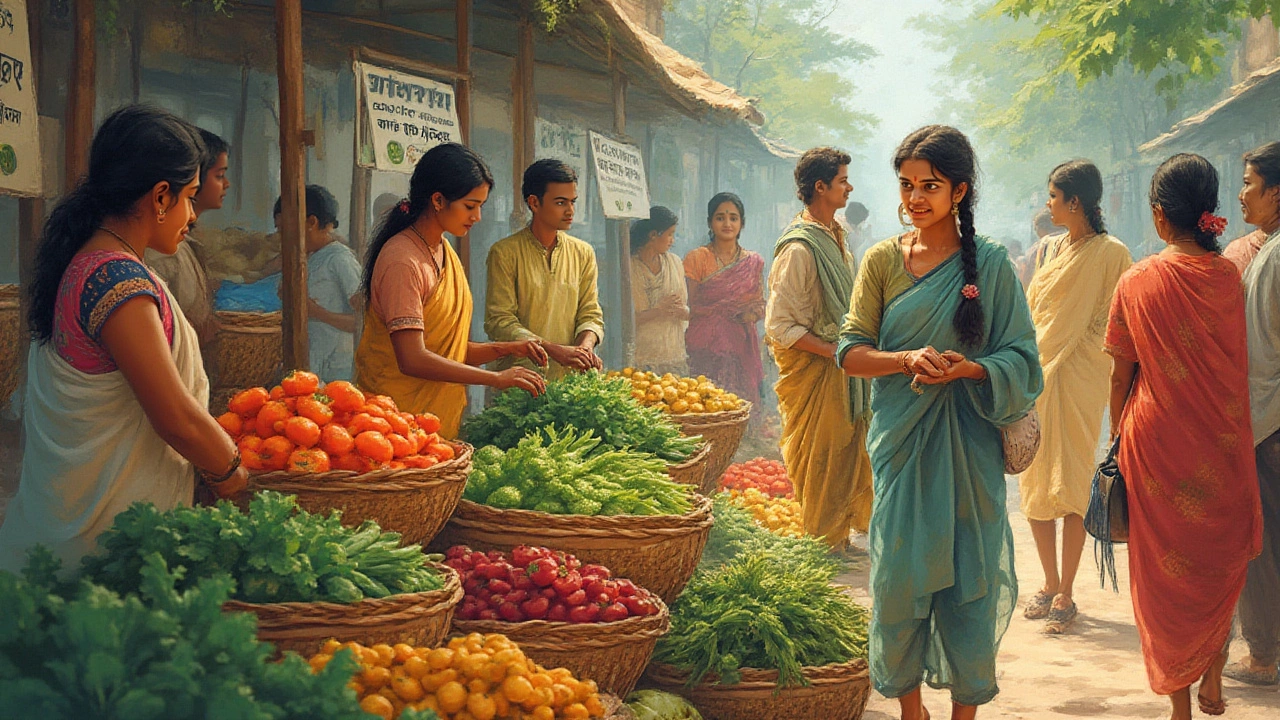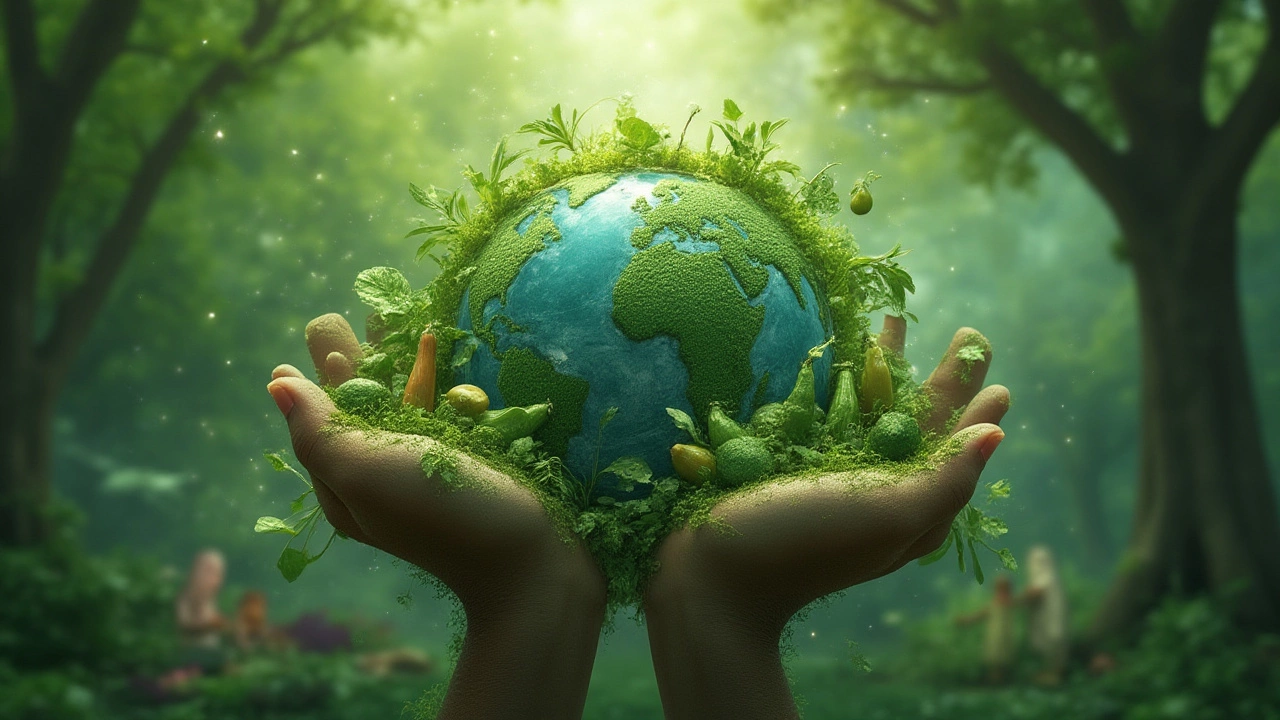What if the crunch in your salad meant more than just flavor? Picture this: a simple head of lettuce or a bunch of carrots could have a smaller environmental footprint than some of the world’s most famous superfoods. The answer isn’t just about what’s tasty or nutritious—it’s about how much water, land, and energy goes into growing it, how far it travels, and how its leftovers break down. Some veggies are surprisingly gentle on the planet, while others hide a secret environmental cost. Let’s dig deep and discover what makes a vegetable truly eco friendly, examining everything from how it’s grown to how you can make better choices without turning your kitchen upside down.
Defining the ‘Eco Friendly’ Vegetable
Choosing the most eco friendly vegetable might sound simple, but the real answer is anything but straightforward. There’s a tangled web of factors behind every green bean and radish. Eco friendliness means a veggie leaves a small mark on the environment across its whole lifecycle—from seed to plate. Scientists measure this by looking at things like water usage, fertilizer runoff, energy for growing and shipping, and how much greenhouse gas gets pumped out at every step.
Let’s break down the biggest points researchers watch:
- Water Consumption: Some veggies are thirstier than others. Lettuce and cucumber gobble up gallons compared to hardy root crops like carrots and beets, which can grow with less.
- Fertilizer and Pesticide Needs: Heavy feeders like spinach or broccoli might need more fertilizer and pesticides, especially in commercial farms, which flows off fields and causes pollution.
- Land Efficiency: Yield matters. Crops that produce more pounds of food per plot—like potatoes or squash—seem smaller in environmental cost per bite.
- Seasonality and Locality: Veggies in season tend to need less energy for greenhouses or long-haul transportation. Eating what’s locally grown slashes emissions tied to transportation.
- Storage and Spoilage: The less likely a veggie is to rot on the shelf, the less waste, and the more eco friendly it is. Root veggies like onions, garlic, and potatoes win here.
Studies also weigh how these factors interact. For example, the peer-reviewed scientific journal "Environmental Research Letters" released a study in 2023 showing that the carbon footprint of vegetables like asparagus skyrockets when flown internationally. That’s not a minor detail—air freight can multiply a veggie’s greenhouse gas emissions by 10 to 20 times compared to road or rail. The bottom line: even so-called green foods can get less eco friendly in the wrong season or if shipped far away.
The upshot is, no single vegetable ticks every box perfectly. But there is a clear field of top contenders that work well together on the eco scoreboard—helping you eat with a lighter conscience and a lighter carbon footprint.
Meet the Most Eco Friendly Vegetables
So which veggies deserve the greenest gold medal? The answer depends a little on where you live and how you garden, but a handful of workhorses rise to the top almost everywhere.
- Peas: These humble pods are superstars. They fix nitrogen in the soil, meaning they pull this vital nutrient from the air for themselves—and for neighboring crops in future seasons—cutting down on artificial fertilizers.
- Lentils and Beans: Similar to peas, lentils and beans also fix nitrogen and require very little water. Lentils take the lead with the lowest greenhouse gas emissions of any popular protein crop—beating beef by a landslide and even most grains.
- Potatoes: These classics give an impressive yield per square foot and need less water than you’d expect. Surprise: potatoes pack in calories and nutrients while requiring about half the water of rice or wheat. They store for months without refrigeration, slashing spoilage and waste.
- Cabbage: This underrated veggie thrives in cool climates with little fuss, offers a huge harvest per plant, and typically doesn’t need much irrigation or spraying. Bonus: cabbage heads rarely go bad fast, so there’s hardly any food waste at home.
- Carrots and Beets: These root vegetables do well with rain and only need light watering in most climates. Not only are they resistant to pests, but their long storage life in cool, dark places means they won’t end up in the compost bin soon after you buy them.
Got a garden? Growing these at home means you’re skipping packaging, shipping, and store refrigeration—all of which rack up hidden emissions. The World Resources Institute published data in 2022 revealing that root veggies handily outperform leafy greens when it comes to water use and waste. For example, a typical carrot needs around 131 liters of water per kilogram, while lettuce clocks in around 237 liters. Sure, both crush beef and dairy products in terms of eco impact, but the gap between veggies themselves is still meaningful over time.
Not convinced? Check out this handy data table for a few favorites:
| Vegetable | Avg. Water Use (liters/kg) | GHG Emissions (g CO2e/kg) | Seasonal Storage Ability |
|---|---|---|---|
| Lentils | 50 | 800 | Excellent |
| Carrots | 131 | 300 | High |
| Potatoes | 287 | 220 | Excellent |
| Lettuce | 237 | 800 | Poor |
| Asparagus (air-freighted) | 258 | 12000+ | Poor |
| Cabbage | 237 | 150 | Good |
Numbers tell the story: lentils score the lowest in both water and emissions, but potatoes and root veggies are close behind, especially considering how much they yield and how well they keep after harvest.

Farming, Organic, and Local Factors
You might be wondering if “organic” always means “eco friendly.” Here’s the twist: it’s not always that simple. Certified organic produce skips synthetic pesticides and fertilizers, which is a great step in the right direction, but sometimes uses more land due to lower yields. Studies by the Food and Agriculture Organization show that while organic veggies cut down on chemical runoff and chemical use, they sometimes need more tilling, weeding, and water—especially with high-demand crops like tomatoes or spinach.
The eco score boosts in community-supported agriculture (CSA) or local farmers’ markets where you get in-season produce right after it’s picked. These veggies often skip packaging and refrigeration altogether and spend almost no time in transit. That shaves off a giant chunk of greenhouse gas emissions compared to supermarket chains shipping out-of-season avocados or asparagus from halfway across the world.
Regenerative farming is a rising trend to keep tabs on. This method rotates crops like beans, peas, and root veggies in the same soil, boosting soil health, soaking up more carbon from the air, and slashing the need for added chemicals. So if you spot carrots at your local market labeled “regeneratively farmed,” you’re getting a double win—good for you, great for the earth.
Wondering if it all really makes a difference? Peer-reviewed studies from the University of Oxford have found that shoppers who switched to local, in-season, and low-impact veggies (like lentils, onions, and cabbage) cut down their food-related carbon emissions by up to 60%. That’s not a marketing gimmick—it’s real-world data with a huge planetary payoff.
Veggie Choices at Home: Small Steps, Big Wins
Eco friendly veggies don’t stop at the farm—what happens in your kitchen matters just as much. Food waste is the sneakiest villain in the eco story. Nearly one third of all food produced globally ends up in the trash, with fresh produce leading the parade. You can turn this around with smarter shopping, storing, and cooking tricks.
- Shop for Shelf-Life: Pick root veggies like onions, potatoes, carrots, and beets in bulk. They last longer in a cool, dry spot and keep their nutrients, too.
- Embrace Ugly Veggies: “Imperfect” produce is just as tasty, often cheaper, and keeps edible crops out of landfill. Get creative with odd-shaped carrots or nubby potatoes—they make perfect soups and stews.
- Eat Nose to Root: Beet greens, carrot tops, and broccoli stalks are all edible. Toss them into stir-fries or pesto instead of tossing them in the bin.
- Compost Scraps: If something goes past its prime, compost it. You’ll cut methane emissions from landfill and create earthy gold for your next veggie patch.
Ever tried sprouting beans or peas on a windowsill? You get cheap, super-nutritious greens with close-to-zero footprint—and it’s easy enough that even kids can help. Don’t forget, meal planning trims food waste. Jot down what you actually use in a week and stick to that list; it goes further than any act of eco-friendly shopping alone.
Here’s a pro tip: When you do shop, ask about how your veggies were grown. Was this cabbage rainfed or irrigated? Is this potato from storage or just dug up? It might sound nosy, but farmers love shoppers who care, and you’ll walk away with food that’s fresh and as green as possible—literally and figuratively!

Hidden Impacts: The Veggies to Rethink
While most veggies are easy on the planet, a few could surprise you with their hidden environmental toll. Asparagus, especially when flown in from Peru out-of-season, racks up massive carbon emissions—almost overnight. Salad greens like lettuce and baby spinach use tons of water and spoil quickly, leading to huge amounts of food waste compared to root or hardy leaf vegetables.
Tomatoes are another tricky one. Out-of-season or hothouse tomatoes need heated greenhouses, gobbling fossil fuels. In 2023, the Journal of Cleaner Production compared UK hothouse tomato crops to Spanish field-grown ones and found the UK-grown batches had a carbon footprint that was nearly five times as high, mostly due to heating and lighting requirements. So, the greener choice is to buy tomatoes in season or pick canned tomatoes, which usually come from field-grown crops and get processed at their freshest.
Ditch plastic packaging when possible. Most loose or bulk veggies use way less energy for packaging than triple-wrapped baby carrots or salad kits. Every small cutback here chips away at the bigger environmental load your food choices build up week after week.
If you love your avocados or imported salads, don’t panic. The goal isn’t to “never eat” anything, but to make them special-occasion treats—not daily staples. Try expanding your veggie habits with local, in-season choices the rest of the time. Your wallet and the planet will thank you for it.


